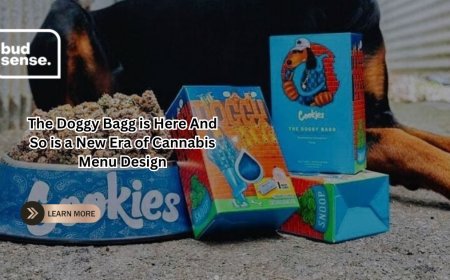Hot & Cold Cups in the UK: Balancing Convenience, Design, and Sustainability
In the UK, the use of hot and cold beverage cups has become a daily necessity, driven by the nations thriving coffee culture, fast-paced lifestyle, and increasing demand for on-the-go convenience. From early morning lattes to refreshing iced teas in summer, hot and cold cups are indispensable for cafes, takeaways, events, and personal use. As environmental concerns continue to rise, the spotlight is also on the sustainability and material innovation of these cups. This article explores the types, uses, challenges, and trends surrounding hot and cold cups in the UK.
Types of Hot & Cold Cups in the UK
Hot and cold beverage cups are specifically designed to retain temperature, prevent leakage, and enhance the drinking experience. Here's an overview of the most common types available in the UK:
1. Paper Cups
Paper cups are widely used for both hot and cold drinks, particularly in coffee shops and takeaway outlets. Hot drinks are typically served in double-walled or ripple-wall cups that provide insulation and protect hands from heat. Cold paper cups, often coated with a thin plastic lining, are ideal for soft drinks, juices, and smoothies.
2. Plastic Cups
Clear plastic cups, usually made from PET or PLA (a plant-based alternative), are popular for cold drinks like iced coffees, milkshakes, and bubble teas. PET offers excellent clarity and is recyclable in most UK facilities, while PLA is compostable under industrial conditions.
3. Reusable Cups
Reusable cups are gaining traction as a sustainable alternative to disposable options. Stainless steel, ceramic, bamboo fibre, and BPA-free plastic cups are available from brands like KeepCup, Chillys, and Stojo. Many UK coffee chains offer discounts for customers who bring their own cups, encouraging the switch to reusables.
4. Compostable and Biodegradable Cups
To address environmental concerns, many suppliers now offer compostable cups made from materials like bagasse (sugarcane pulp) or PLA-lined paper. These options are designed to break down in composting facilities and are marketed as eco-friendly choices.
Key Uses and Industries
Hot and cold cups are essential in a wide range of settings across the UK:
-
Coffee Shops & Cafs: From independent cafs to chains like Costa, Starbucks, and Pret, millions of hot beverages are served in takeaway cups every day.
-
Fast Food & Takeaways: Cold drink cups are commonly used for sodas, milkshakes, and iced teas.
-
Events & Festivals: Cups are indispensable at festivals, outdoor markets, and sports events where drinks are consumed on the go.
-
Offices & Workplaces: Many offices provide disposable cups for coffee machines or water dispensers, though there's a growing trend toward reusable mugs and tumblers.
Environmental Impact and Regulations
The UK generates billions of disposable cups each year, and many end up in landfills due to the difficulty of recycling cups lined with plastic. In response, both government and industry are taking action:
-
Plastic Ban Initiatives: The UK government has introduced legislation banning single-use plastics, including certain types of plastic cups and straws.
-
Cup Recycling Schemes: Coffee chains and local councils are working together to introduce cup recycling stations. Costa Coffee, for example, has recycling points in many of its stores.
-
Deposit Return Schemes: Some businesses offer a small deposit for reusable cups, refunded when the cup is returned, reducing waste.
Despite these efforts, only a small percentage of disposable cups are currently recycled due to the specialised facilities required to separate the plastic lining from the paper.
Consumer Preferences and Trends
UK consumers are increasingly eco-conscious, and this is shaping the hot and cold cup market in several ways:
-
Eco Branding: Cups with visible eco-labels or sustainability messaging appeal to environmentally aware customers.
-
Aesthetic Design: Attractive, well-branded cups can serve as marketing tools, with many businesses using them to strengthen brand identity.
-
Customisation: Personalised or seasonal cup designs enhance customer engagement and improve brand recall.
-
Temperature Retention: Quality hot cups with good insulation and cold cups with sturdy, leak-proof lids are a priority for busy, on-the-go consumers.
What to Consider When Choosing Hot & Cold Cups
Businesses and individuals should consider the following when selecting cups:
-
Material Type: Choose based on the drinks temperature, recyclability, and budget.
-
Size and Volume: Popular sizes in the UK range from 8oz to 16oz for hot drinks and up to 22oz for cold beverages.
-
Lid Compatibility: Leak-proof lids are vital for preventing spills, especially for commuters.
-
Sustainability Credentials: Look for certifications like FSC (Forest Stewardship Council) or compostability standards to ensure the cups meet environmental requirements.
Conclusion
Hot and cold cups are a small but significant part of the UKs food and beverage landscape. With the rising demand for convenience, style, and sustainability, the future of these cups lies in innovation and responsible consumption. Whether youre a caf owner, event organiser, or an everyday consumer, choosing the right cup involves balancing practicality with environmental responsibility. As the UK continues to embrace greener habits, the humble beverage cup is set to play an even bigger role in shaping how we consume on the go.







































